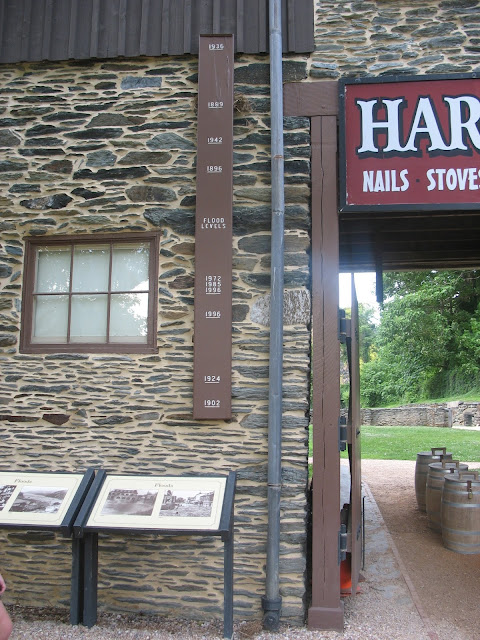The Appalachian Trail
Lewis & Clark
The first really cool thing about Harpers Ferry is that one of my absolute heroes, Merriwether Lewis, stocked up there for his famous cross-country trip.
Lewis & Clark's supplies.
John Brown's Raid
On October 16, 1859, radical abolitionist John Brown led a small army of 18 men into the town. His plan was to instigate a major slave rebellion in the South. He would seize the arms and ammunition in the federal arsenal, arm slaves in the area and move south along the Appalachian Mountains, attracting slaves to his cause. He had no rations. He had no escape route. His plan was doomed from the very beginning. But it did succeed to deepen the divide between the North and South.
John Brown and his cohorts marched into an unsuspecting Harpers Ferry and seized the armory with little resistance. He then sent a patrol out into the country to contact slaves, collected several hostages, and sat down to wait. The slaves did not rise to his support, but local citizens and militia surrounded him, exchanging gunfire, killing two townspeople and eight of Brown's company, including, ironically, a free black man and two of Brown's own sons. Troops under the command of Lieutenant Colonel Robert E. Lee arrived from Washington to arrest Brown. They stormed the engine house, where Brown had withdrawn, captured him and members of his group, and turned them over to Virginia authorities to be tried for treason. He was quickly tried and sentenced to hang on December 2.
Brown's strange effort to start a rebellion was over less than 36 hours after it started; however, the consequences of his raid lasted far longer. In the North, his raid was greeted by many with widespread admiration. While they recognized the raid itself was the act of a madman, some northerners admired his zeal and courage. Church bells pealed on the day of his execution and songs and paintings were created in his honor. Brown was turned into an instant martyr. Ralph Waldo Emerson predicted that Brown would make "the gallows as glorious as the cross." The majority of northern newspapers did, however, denounce the raid. The Republican Party adopted a specific plank condemning John Brown and his ill-fated plan. But that was not what the south saw.
Southerners were shocked and outraged. How could anyone be sympathetic to a fanatic who destroyed their property and threatened their very lives? How could they live under a government whose citizens regarded John Brown as a martyr? Southern newspapers labeled the entire north as John Brown sympathizers. Southern politicians blamed the Republican Party and falsely claimed that Abraham Lincoln supported Brown's intentions. Moderate voices supporting compromise on both sides grew silent amid the gathering storm.
Crazy John Brown.
The Civil War
The Civil War was disastrous for Harpers Ferry, which changed hands eight times between 1861 and 1865. When Virginia seceded in April 1861, the U.S. garrison attempted to burn the arsenal and destroy the machinery, to prevent the Confederates from using it. Locals saved the equipment, which the Confederate Army transferred to a more secure location in its capital of Richmond. The US Army never renewed arms production in Harpers Ferry.
Because of the town's strategic location on the railroad and at the northern end of the Shenandoah Valley, both Union and Confederate troops moved through Harpers Ferry frequently. Gen. Robert E. Lee did not want to continue on to Maryland in 1862 without capturing the town. It was on his supply line and could control one of his possible routes of retreat if the invasion did not go well. Dividing his army of approximately 40,000 into four sections, Lee used the cover of the mountains to send three columns under Stonewall Jackson to surround and capture the town. With 12,419 Federal troops captured, the surrender at Harpers Ferry was the largest surrender of US military personnel until World War II. Jackson's troops rejoined the rest of the Confederate Army at the Battle of Antietam (see previous post.)
Unfortunately, proximity to both these rivers causes regular flooding in Harpers Ferry. The brown post above marks flood levels for various years.
Besides packing a lot of history into a tiny town, Harpers Ferry is adorable. It sits perched on a little slope between two rivers, like a little, forgotten European village. We ate dinner in a little tavern snuggled against a rocky hillside and strolled around historic buildings. Who knew this tiny town would be so wonderful?

















No comments:
Post a Comment